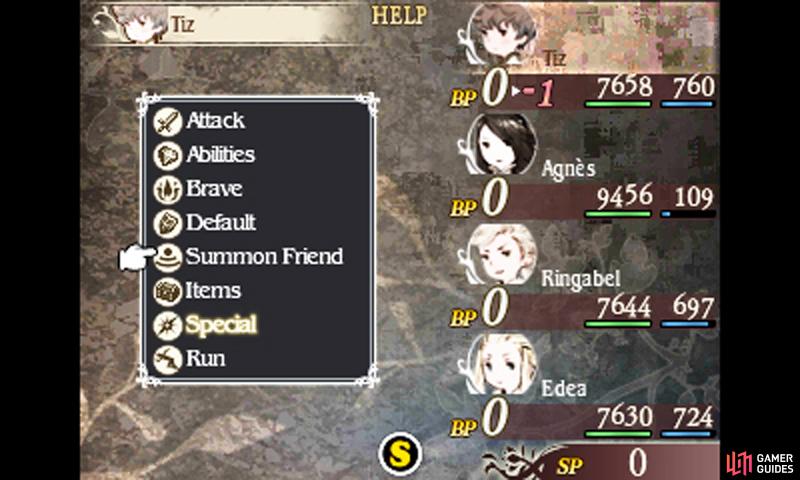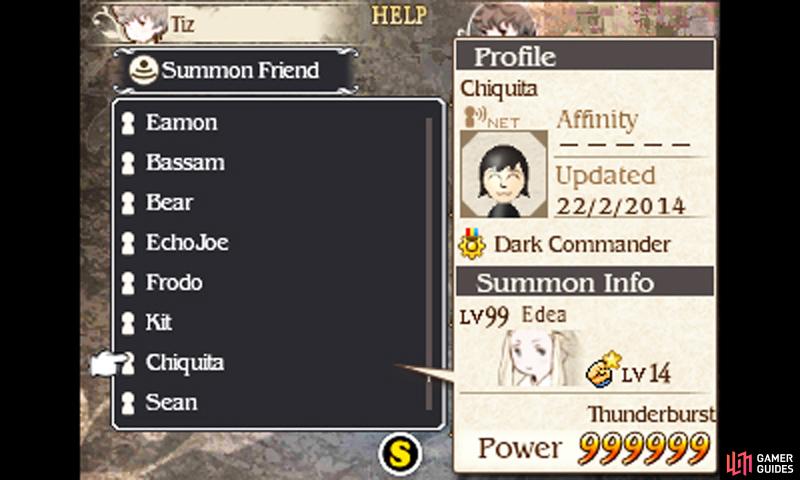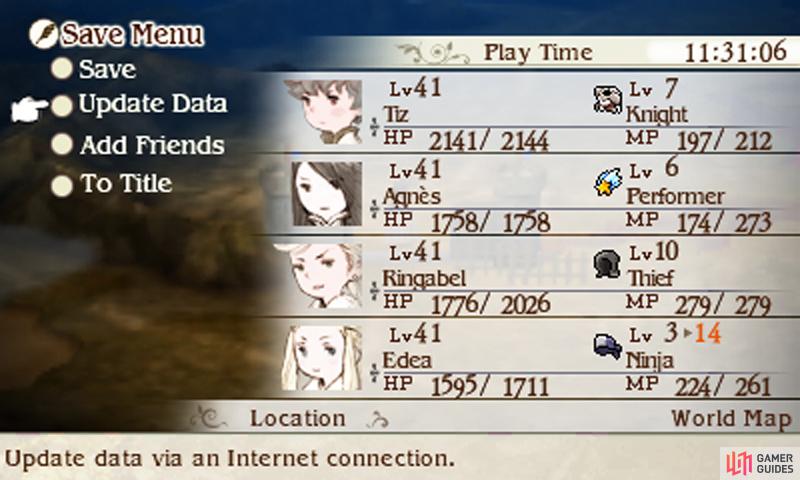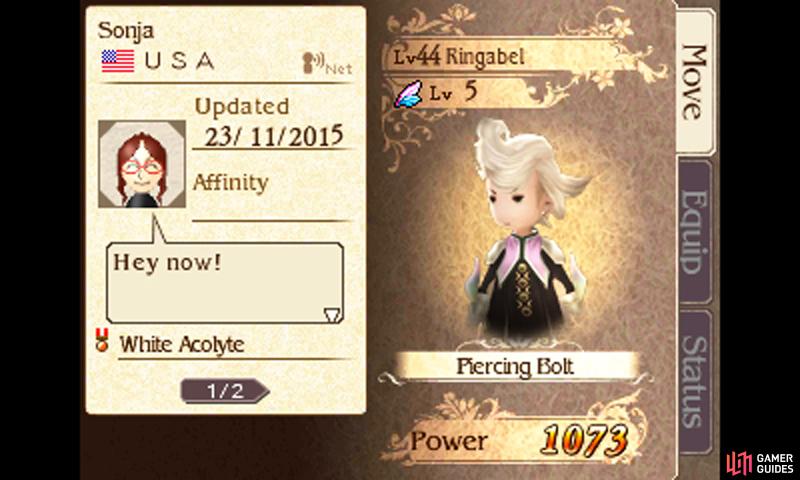When things are looking grim or you just want a helping hand in battle, you can reach out to other Bravely Default players for aid. By using the “Summon Friend” command in battle, you can send a move to other players or use a move somebody else has sent you via online or StreetPass interactions.
Crying For Help¶
Let’s begin with the one that benefits you–have one of your characters select “Summon Friend” followed by “Summon” to bring up a list of characters and moves to summon (friend summons). If you choose a friend summon, your character will spend an action (1 BP) and call upon that friend summon when their turn arrives.
(1 of 2) Against tough bosses, it’s OK to phone a friend.
Against tough bosses, it’s OK to phone a friend. (left), (right)
Using a friend summon counts as a standard action, so you can do it multiple times in one turn and/or in conjunction with Brave. However, once you’ve used a particular friend summon, you cannot summon the same one again unless the other person resends it.
Once the friend summon appears, it will damage the enemy, heal your allies or something else, depending on what move was being sent. To find out what your friend summon does in advance, be sure to study the Summon Info when choosing it:
Level
As a general rule of thumb, the higher the Level, the more powerful–and thus more useful–the summon. If you have a party of Level 30 characters and you summon a Level 10 character, it’s very likely they’ll be of little help.
The Move
This is very important as it determines exactly what the friend summon will do. However, if you’re early in the game, it can be difficult identifying the move as there are hundreds of possible moves. This is compounded by the fact that people can rename their Special Moves and you may also get moves from different languages.
Power
Where all else fails, there’s this helpful number. Slightly confusingly, the figure displayed here is not the damage that will be done to the enemy–it’s just the damage the other player did in their situation. If the other player is a similar Level to you, chances are this number will be close though.
If the number is red, this indicates damage to the enemy; meanwhile a blue number indicates recovery for your party.
Lending a Hand¶
Now you know how to call for help, but what if you want to supply help? Once again, have a character pick the “Summon Friend” command, but this time followed by “Send”. An orange frame will appear around the command menu, indicating you’re ready to send a move. Simply select an applicable move, like you would normally, and you’re good to go!
On your character’s turn, they will use the chosen move and chuck Agnes’s pendant high into the air, which means your action was successful. All you need to do now is complete the battle, at which point your sent move will be updated (if you disabled automatic updating of sent moves, you’ll need to tap the Inbox icon in the map menu).
Exchanging Summons¶
(1 of 2) Are you the only 3DS player in town? Don’t worry, you can receive the same benefits as StreetPass by connecting online!
Are you the only 3DS player in town? Don’t worry, you can receive the same benefits as StreetPass by connecting online! (left), (right)
To physically send and receive friend summons, you must use the Update Data option or StreetPass (please refer to the Communications chapter). Put simply, you can use Update Data to receive new or updated friend summons for each friend you registered in Bravely Default. Additionally, once per day, you can retrieve up to five random friend summons from across the globe.
While this is happening, you will also automatically upload your friend summon for your friends or random guests to receive when they use Update Data. Similarly, if you tag a Bravely Default player via StreetPass, you will automatically exchange friend summons too.
Pros and Cons¶
As you can imagine, friend summons are great for a pinch, when you’ve exhausted all other possible options. Or if you have friends much further ahead, you can use their overpowered friend summons to totally obliterate bosses. Summons are also useful for extending your Special Move music buffs, if you use a friend summon with a Special Move.
What’s bad about friend summons? Well, if you’re a traditionalist sort of player, you might find them a bit of a cheat, especially if you come across high Level summons. Like, where’s the fun if you can call a Level 99 summon to wipe out a boss in one hit?
Perhaps a better reason is that they’re not always reliable. For one, some people may not have regular access to wireless internet or StreetPass tags. Even if you do have a steady supply of summons, there’s no telling what moves somebody might give you–they could be amazing ones or standard moves you could do yourself without all the flashy effects.





 Sign up
Sign up
No Comments